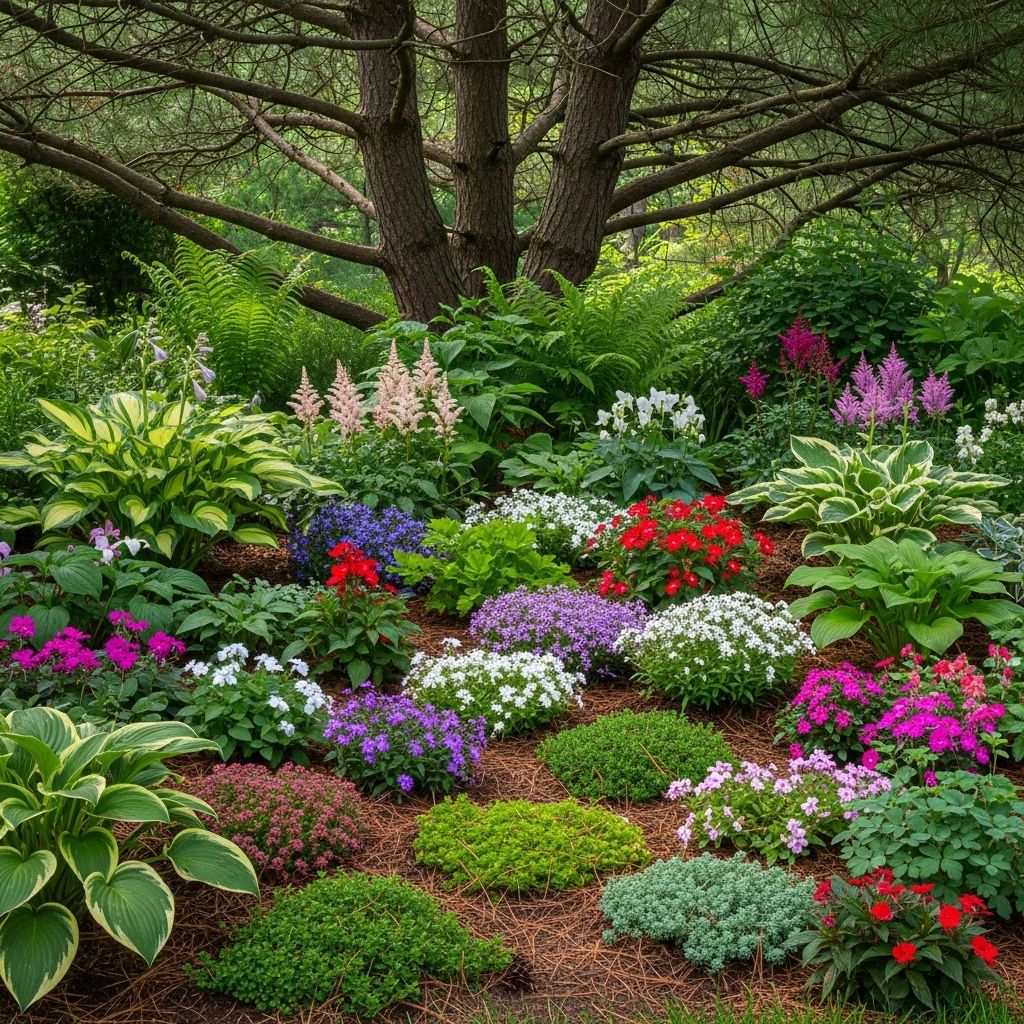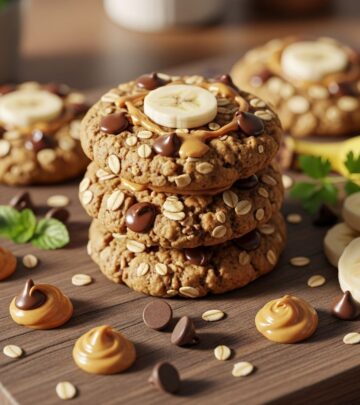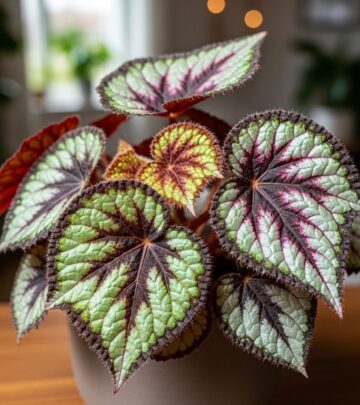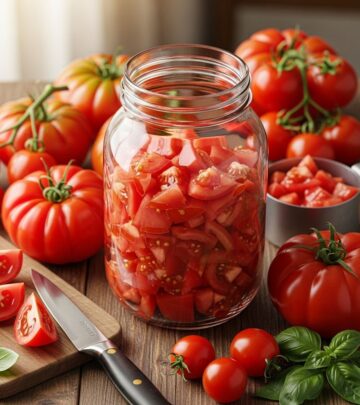Plants For Under Pine Trees: 23 Best Picks For Shade Gardens
Find the perfect perennials, ferns, shrubs, and groundcovers to beautify the challenging garden space beneath pine trees.

Image: HearthJunction Design Team
23 Best Plants to Thrive Under Pine Trees
Do you have pine trees dominating corners of your yard, with sparse, patchy ground underneath? Landscaping under pine trees is famously difficult—yet, with the right plant choices, you can create a lush, attractive woodland garden bursting with texture and color. Here’s your comprehensive guide to transforming the bare ground beneath your majestic pines into a thriving, low-maintenance landscape.
Why Is It Hard to Grow Plants Under Pine Trees?
- Soil acidity: Pine needles naturally acidify the soil, often resulting in a lower pH that many standard garden plants dislike.
- Surface roots: Pines have shallow, fibrous roots that aggressively compete for moisture and nutrients.
- Dense shade: The wide, evergreen canopy blocks much of the sunlight, making the area beneath pines dim for much of the year.
- Dry conditions: Pine canopies shed rainwater, leaving the soil beneath drier than other garden areas.
Because of these factors, traditional lawn grasses and many common landscape plants will struggle or fail beneath pines. The trick is to select species that naturally thrive in dry, acidic, shady environments, with shallow root systems and a tolerance for root competition.
Choosing the Right Plants for Under Pine Trees
The best plants for this setting prefer:
- Acidic to slightly acidic soil (pH 4.0 to 6.5)
- Partial to deep shade
- Well-drained soil, sometimes drought conditions
- Low to moderate water and nutrient needs
Perennials, ferns, ornamental grasses, sedges, groundcovers, and certain compact shrubs are all excellent choices. Below is a diverse selection of 23 beautiful and resilient plants ideal for under pine trees.
Top 23 Plants for Under Pine Trees
Dwarf Palmetto (Sabal minor)
- Height: 2–10 feet
- Sun: Full sun to partial shade
- Zones: 7–10
- Notes: This compact palm tolerates shade, dry soil, and is evergreen for year-round structure.
To explore more about turning your garden into a winter-ready haven, don’t miss our list of 15 cold hardy ground cover plants that can provide stunning visual interest while surviving the cold. These selections bring both beauty and practicality to your landscape, ensuring it remains vibrant across seasons.Western Bracken Fern (Pteridium aquilinum)
- Height: 1–3 feet
- Sun: Partial to full shade
- Zones: 3–10
- Notes: Exceptionally adaptable, low maintenance, and thrives in acidic, shady, dry soils.
Creeping Phlox (Phlox stolonifera)
- Height: 3–6 inches
- Sun: Partial shade
- Zones: 5–9
- Notes: Spreads quickly, providing a lush groundcover and lovely spring blooms.
Sweet Woodruff (Galium odoratum)
- Height: 8–12 inches
- Sun: Full to partial shade
- Zones: 4–8
- Notes: Aromatic foliage, white flowers, and excellent for carpeting shaded spots.
Wild Ginger (Asarum canadense)
- Height: 6–12 inches
- Sun: Full to partial shade
- Zones: 4–8
- Notes: Lush, heart-shaped foliage; thrives as a groundcover under pines.
Coral Bells (Heuchera spp.)
- Height: 8–18 inches
- Sun: Partial to full shade
- Zones: 4–9
- Notes: Colorful foliage, delicate blooms—adds texture and brightness to shaded areas.
Stonecrop (Sedum spp.)
- Height: Varied by species
- Sun: Full sun to partial shade
- Zones: 3–9
- Notes: Drought-tolerant, low-growing succulents for tough, dry sites.
Santa Barbara Daisy (Erigeron karvinskianus)
- Height: 6–18 inches
- Sun: Full sun to partial shade
- Zones: 6–10
- Notes: Long-lasting daisy blooms, airy texture, blends well with other groundcovers.
Ferns (Various, e.g., Lady Fern, Ostrich Fern, Autumn Fern)
- Height: Variable
- Sun: Partial to full shade
- Zones: Most zones
- Notes: Classic woodland look, thrive in shady, acidic soils, and tolerate pine competition.
Matilija Poppy (Romneya coulteri)
- Height: 6–10 feet
- Sun: Full sun to light shade
- Zones: 7–10
- Notes: Large, showy white poppy flowers and a bold structure under tall pines.
Salvia (Salvia spp.)
- Height: 1–4 feet
- Sun: Full sun to light shade
- Zones: 5–10
- Notes: Aromatic foliage; pollinator-friendly; adapts well to dry, acidic soils.
Lavender Cotton (Santolina spp.)
- Height: 1–2 feet
- Sun: Full sun to partial shade
- Zones: 6–9
- Notes: Silvery foliage, yellow button flowers; excellent for dry, poor soils.
Evening Primrose (Oenothera spp.)
- Height: 1–2 feet
- Sun: Full sun to partial shade
- Zones: 4–9
- Notes: Bright yellow flowers, drought-tolerant and easy to grow.
Penstemon (Penstemon spp.)
- Height: 1–3 feet
- Sun: Full sun to partial shade
- Zones: 4–10
- Notes: Trumpet-shaped flowers; attractive to pollinators.
California Poppy (Eschscholzia californica)
- Height: 8–12 inches
- Sun: Full sun to partial shade
- Zones: 6–10
- Notes: Vibrant orange flowers; tough and drought-resistant.
Campanula (Bellflower)
- Height: 6–24 inches
- Sun: Full sun to partial shade
- Zones: 3–9
- Notes: Star-shaped, blue or purple flowers; tolerant of acidic soils.
Limonium (Sea Lavender)
- Height: 12–18 inches
- Sun: Full sun
- Zones: 3–9
- Notes: Cloud-like blooms, thrives in dry, poor soils.
Artemisia (Wormwood)
- Height: 1–3 feet
- Sun: Full sun to partial shade
- Zones: 4–9
- Notes: Silvery, aromatic foliage and strong drought tolerance.
Heuchera (Coral Bells)
- Height: 8–18 inches
- Sun: Partial to full shade
- Zones: 4–9
- Notes: Vibrant foliage in purple, red, or green; delicate flower spikes.
Romneya coulteri (Matilija Poppy)
- Height: 6–10 feet
- Sun: Full sun to light shade
- Zones: 7–10
- Notes: Dramatic white flowers with yellow centers; a bold focal point.
Sedges (Carex spp.)
- Height: 6–24 inches
- Sun: Partial to full shade
- Zones: 3–9
- Notes: Fine-textured grasses for shade and low-maintenance groundcover.
Mosses
- Height: Under 1 inch
- Sun: Full to deep shade
- Zones: Adaptable
- Notes: For a serene, emerald green carpet beneath mature pines, moss is unmatched for shade, acidity, and dry conditions.
Design Tips for Successful Pine Tree Landscaping
- Prepare the soil: Test and amend soil for acidity as needed. Add compost to improve moisture retention and fertility, but avoid disturbing pine roots as much as possible.
- Watering: Water deeply during establishment; once mature, most recommended plants tolerate dry conditions well.
- Mulch: Use pine needles, shredded bark, or leaf litter to conserve moisture and maintain acidity—just don’t pile mulch against stems.
- Plant spacing: Space plants to allow for mature spread, as crowding increases competition for limited resources.
- Layer for interest: Combine groundcovers, low perennials, ferns, and occasional shrubs in layers to mimic woodland ecology and add interest.
- Limit grass: Lawns rarely succeed under pines; choose adapted groundcovers or moss instead.
Common Mistakes to Avoid
- Attempting to grow standard turfgrass or water-hungry plants under pines
- Over-amending the soil, which can harm pine roots or alter the natural woodland character
- Ignoring root competition when planting; always dig shallowly and with care
- Choosing plants intolerant of acidity or drought
Frequently Asked Questions (FAQs)
What causes bare patches under pine trees?
Bare patches are usually due to low light, root competition, dry conditions, and acidic soil, all of which can hinder grass and many garden plants.
How can I improve the soil for plants under pine trees?
Test your soil’s pH and add organic matter, such as compost, to improve structure and water retention. For soil that is too alkaline, consider applying elemental sulfur to gently make it more acidic.
Will these plants harm my pine trees?
No. The listed plants have shallow root systems and low nutrient needs, so they won’t seriously compete with pines for resources. Avoid deep digging near trunks to prevent root injury.
Is it okay to leave pine needles as mulch?
Absolutely. Pine needle mulch helps maintain acidity, conserves moisture, and reduces weeds. Spread them evenly but don’t let them pile deeply against plant stems.
Do I need to fertilize under pine trees?
Most recommended plants are low-maintenance, but a light application of a balanced, slow-release fertilizer in early spring can help if growth is lacking. Always water well after fertilizing.
Quick Reference Table: Plants for Under Pine Trees
| Plant Name | Height | Sun | Zones | Key Feature |
|---|---|---|---|---|
| Dwarf Palmetto | 2–10 ft | Full-partial | 7–10 | Evergreen palm, bold foliage |
| Western Bracken Fern | 1–3 ft | Shade | 3–10 | Tough, adaptable fern |
| Creeping Phlox | 2–6 in | Partial | 5–9 | Carpet-former, spring color |
| Sweet Woodruff | 8–12 in | Shade | 4–8 | Fragrant foliage, groundcover |
| Wild Ginger | 6–12 in | Shade | 4–8 | Lush leaves, woodland look |
| Coral Bells | 8–18 in | Shade | 4–9 | Colorful leaves, texture |
| Stonecrop | Varies | Partial | 3–9 | Succulent, low maintenance |
| Santa Barbara Daisy | 6–18 in | Partial | 6–10 | Long bloom, airy habit |
| Ferns | Varies | Shade | Most | Classic woodland form |
| Matilija Poppy | 6–10 ft | Light Shade | 7–10 | Showy, bold flowers |
| Salvia | 1–4 ft | Partial | 5–10 | Aromatic, pollinator-friendly |
| Lavender Cotton | 1–2 ft | Partial | 6–9 | Silvery leaves, yellow blooms |
| Evening Primrose | 1–2 ft | Partial | 4–9 | Bright, drought tolerant |
| Penstemon | 1–3 ft | Partial | 4–10 | Tubular flowers, pollinators |
| California Poppy | 8–12 in | Partial | 6–10 | Vivid orange flowers |
| Campanula | 6–24 in | Partial | 3–9 | Blue or purple bells |
| Limonium | 12–18 in | Full | 3–9 | Clouds of flowers |
| Artemisia | 1–3 ft | Partial | 4–9 | Silvery, drought tolerant |
| Heuchera | 8–18 in | Shade | 4–9 | Colorful foliage |
| Sedges | 6–24 in | Shade | 3–9 | Fine, grassy texture |
| Mosses | <1 in | Deep shade | Varies | Dense green carpet |
Conclusion
With thoughtful plant selection and a few strategic gardening practices, you can overcome the classic challenges of landscaping beneath pine trees. Whether you want a tranquil mossy glade, a shady tapestry of ferns and wildflowers, or an eye-catching mix of foliage and blooms, these 23 plants offer a palette as resilient and diverse as the pines themselves. Embrace the unique beauty of your woodland space and watch it flourish season after season.
References
Read full bio of medha deb












